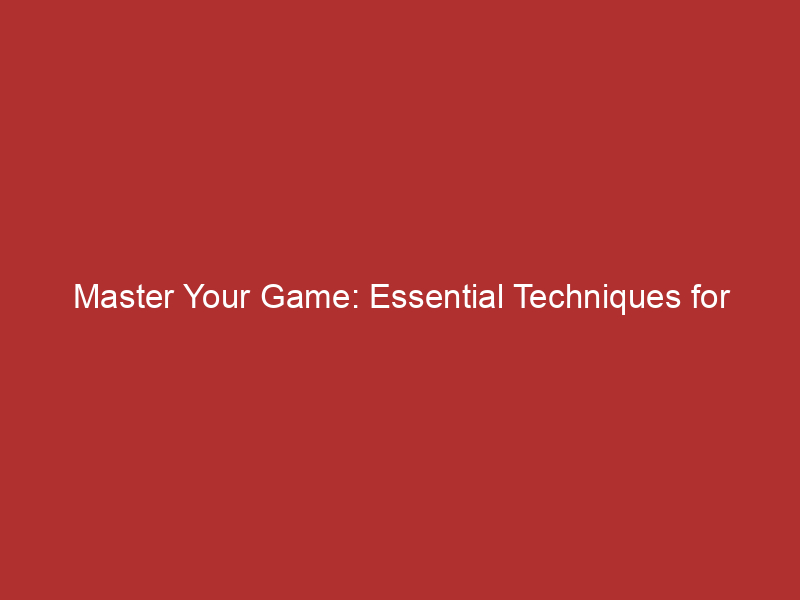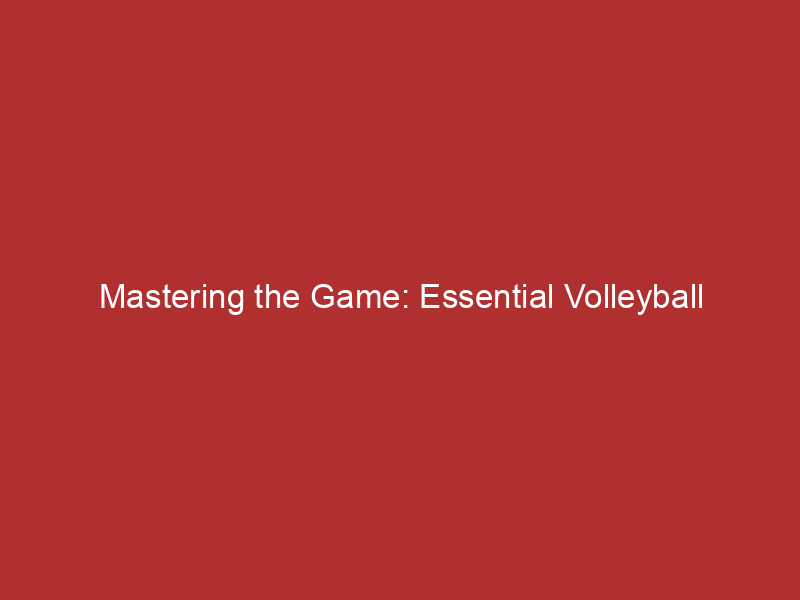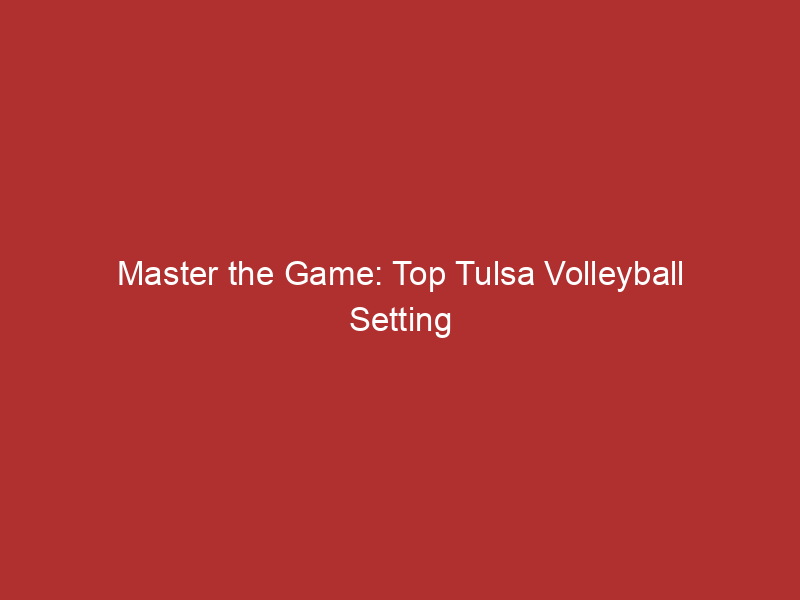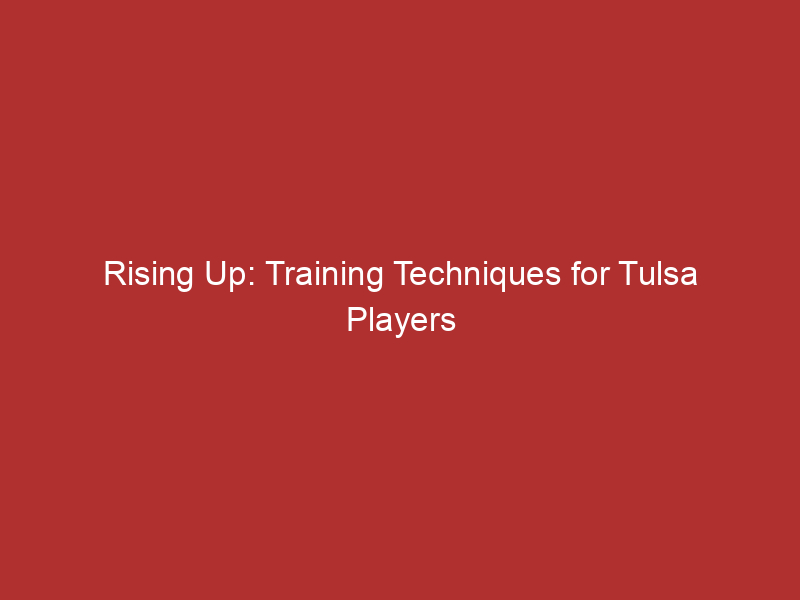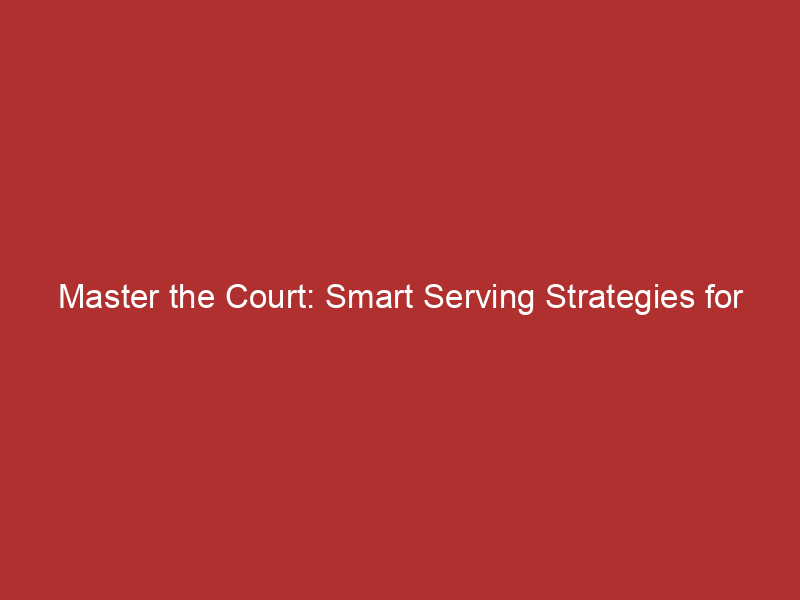Introduction to Volleyball Setting Skills
Hey there, volleyball enthusiasts! Today, we’re going to dive into the exciting world of volleyball setting skills. Setting is a crucial part of the game, and it’s a skill that every player should master. So, let’s get started!
- Importance of setting in volleyball
Setting is like the heartbeat of volleyball. It’s the skill that keeps the game moving and sets up the big, exciting plays. When a ball is served, the first touch is usually a pass, but the second touch is a set. This is where the setter comes into play. The setter’s job is to accurately place the ball for a teammate to attack. Without a good set, it’s tough for a team to score points. According to Wikipedia, the setter is often the most skilled player on the team because they have to make split-second decisions and have excellent ball control.
- Role of a setter in a volleyball team
The setter in a volleyball team is like the quarterback in football or the point guard in basketball. They’re the playmakers. The setter decides who gets the ball and when. They have to read the game, understand their teammates’ strengths, and outsmart the opposition. It’s a big job, but it’s also a lot of fun!
Setters need to have great hand-eye coordination, quick reflexes, and a deep understanding of the game. But more than anything, they need to be great communicators. They need to connect with their teammates, understand their preferences, and make sure everyone is on the same page.
So, whether you’re a seasoned pro or a beginner just starting out, setting is a skill that can make or break your game. So let’s dig deeper and learn how to become a top-notch setter!
Essential Volleyball Setting Techniques
Hey there, volleyball enthusiasts! Let’s dive into some essential volleyball setting techniques that can help you become a better player. These are basic yet crucial skills that every volleyball player should master.
Basic Volleyball Setting Techniques
Here are the top three basic volleyball setting techniques that you should start practicing today:
- Hand Positioning
- Body Positioning
- Footwork
Hand positioning is key in volleyball setting. Your hands should form a shape like a ball, with fingers spread wide and thumbs pointing towards each other. This gives you better control over the ball. Remember, the ball should contact your fingers, not your palms. Wikipedia has a great image showing the correct hand positioning.
Body positioning is all about aligning your body with the ball. Your shoulders should be square to your target, and your knees slightly bent. This gives you the balance and power to set the ball accurately. Always remember to move your entire body towards the ball, not just your arms.
Good footwork is essential for reaching the ball in time and getting into the right position to set it. The basic footwork pattern for setting is right-left-right for right-handed players, and left-right-left for left-handed players. Practice this pattern until it becomes second nature.
Mastering these basic setting techniques will set you up for success on the volleyball court. So, get out there and start practicing!
Advanced Volleyball Setting Techniques
Now that you’ve mastered the basics, it’s time to take your volleyball setting skills to the next level. Here are three advanced techniques that can help you become a more effective setter and a real game-changer for your team.
- Back Setting
- Jump Setting
- One-Hand Setting
Back setting is a sneaky move that can catch the opposing team off guard. Instead of setting the ball to a player in front of you, you set it to a player behind you. This unexpected move can confuse the other team and create an opportunity for a powerful spike. To master back setting, you need to have a good sense of where your teammates are on the court. Practice this move during drills to get the hang of it.
Jump setting is a dynamic move that can give your hitters more time to get into position. In a jump set, you leap into the air to meet the ball instead of waiting for it to come to you. This technique requires excellent timing and strong leg muscles. You can build these skills with exercises like squats and lunges, and by practicing your jump timing during drills.
One-hand setting is a tricky technique that can give you an edge in tight situations. Instead of using both hands to set the ball, you use just one. This move can be useful when you’re too close to the net or the ball is coming at an awkward angle. To master one-hand setting, you need to have a strong wrist and good ball control. Practice this move with a partner to improve your accuracy and confidence.
Remember, these advanced techniques require practice and patience. Don’t be discouraged if you don’t get them right away. Keep practicing, stay positive, and you’ll see improvement over time. Happy setting!
Volleyball Setting Drills
Now that we’ve covered the basics of volleyball setting techniques, let’s dive into some fun and effective drills you can practice to improve your setting skills. Remember, practice makes perfect!
- Wall Setting Drills
- Partner Setting Drills
- Team Setting Drills
Wall setting drills are a great way to start. All you need is a wall and a volleyball. Stand about two feet from the wall and set the ball against it. The goal is to control your sets so the ball hits the same spot on the wall every time. This drill helps improve your hand placement and control. It’s simple, but very effective!
Next up, we have partner setting drills. These drills require two players and a volleyball. Stand about ten feet apart and practice setting the ball to each other. Try to set the ball so it lands right in your partner’s hands. This drill not only improves your setting skills, but also helps build teamwork and communication. Plus, it’s a lot of fun!
Finally, we have team setting drills. These drills involve the whole team and are a great way to improve your setting skills in a game-like situation. One popular drill is the ‘circle drill’ where players stand in a circle and set the ball to the player next to them. This drill helps improve your accuracy and timing, and it’s also a great team bonding exercise.
Remember, the key to improving your volleyball setting skills is consistent practice. So grab a volleyball, find a partner or a team, and start practicing these drills. Happy setting!
Volleyball Setting Tips and Strategies
Hey there, volleyball enthusiasts! Let’s dive into some cool tips and strategies to improve your volleyball setting skills. These tips are easy to follow and can make a big difference in your game. So, let’s get started!
Tips for Improving Your Volleyball Setting Skills
Here are three key areas to focus on:
- Practicing Proper Hand Positioning
- Improving Footwork
- Building Strength and Flexibility
Proper hand positioning is crucial for a good set. Your fingers should form a triangle, with your thumbs and index fingers touching each other. This gives you better control over the ball. Practice this at home or during warm-ups before a game. Remember, practice makes perfect!
Good footwork is essential for setting. It allows you to move quickly and get in the right position to set the ball. Try drills like ladder drills or cone drills to improve your footwork. And don’t forget to wear comfortable shoes!
Strength and flexibility are key for powerful and accurate sets. Regular workouts and stretching exercises can help. Yoga or Pilates can be a great way to improve flexibility. For strength, focus on your upper body and core muscles.
So, there you have it, folks! These tips can help you improve your volleyball setting skills. Remember, it’s all about practice and consistency. Keep at it, and you’ll see improvements in no time. Happy setting!
Volleyball Setting Strategies
Hey there, volleyball enthusiasts! Let’s dive into some cool strategies that can help you become a pro at setting. These strategies are all about understanding the game, working with your team, and using your smarts to outplay the opposition. Ready? Let’s go!
- Reading the Opposition
- Communicating with Teammates
- Strategic Setting to Exploit Weaknesses in the Opposition
One of the key strategies in volleyball setting is reading the opposition. This means observing and understanding the other team’s patterns, strengths, and weaknesses. For example, if you notice a player struggles with high sets, you might want to use high sets more often. It’s like being a detective on the court, always looking for clues to help your team win! Wikipedia has some great information on volleyball strategies if you want to learn more.
Communication is super important in volleyball. You need to let your teammates know your plans and listen to their ideas too. This can be as simple as calling out who’s going to take the ball, or as complex as planning a tricky set to surprise the opposition. Remember, a team that talks is a team that rocks!
Now, this is where your smarts really come into play. Once you’ve read the opposition and communicated with your team, you can start to make strategic sets that exploit the other team’s weaknesses. This could mean setting the ball to a certain area of the court, or setting it in a way that’s hard for a particular player to handle. It’s all about playing smart and giving your team the best chance to score.
So there you have it, folks! Three awesome strategies to help you become a master at volleyball setting. Remember, practice makes perfect, so get out there and start using these strategies in your games. And most importantly, have fun!
Volleyball Setting Fundamentals
Setting is a crucial skill in volleyball. It’s the second touch on the ball and it’s what sets up the spike – the most exciting part of the game! To be a great setter, you need to understand the fundamentals. Let’s dive in!
- Understanding the rules and regulations related to setting
- Mastering the basic setting techniques
- Importance of consistency in setting
First things first, you need to know the rules. In volleyball, a set must be clean. That means no spinning or twisting of the ball. It should come out of your hands smoothly. If it doesn’t, the referee might call a “double hit” or a “carry”. These are penalties and they’ll give the other team a point. You can learn more about the rules on the Wikipedia page for volleyball.
Setting is all about technique. You want to position your hands like you’re holding a big beach ball over your head. Your fingers should be spread wide and your thumbs should be pointing towards your forehead. When the ball comes, push it up with your fingertips. Remember, it’s not a slap – it’s a push!
Consistency is key in setting. You want to be able to set the ball to the same spot every time. That way, your hitters know where to expect the ball and they can get a good hit. Practice makes perfect here. The more you practice, the more consistent you’ll become.
So there you have it – the fundamentals of setting in volleyball. Remember, understanding the rules, mastering the technique, and practicing for consistency are all important. Now get out there and set some balls!
Volleyball Setting Training
Setting is a crucial skill in volleyball. It’s the second touch on the ball and sets up the attack for your team. To become a great setter, you need to focus on both physical and mental training. Let’s dive into the physical aspect of training for volleyball setting.
Physical Training for Volleyball Setting
Physical training for volleyball setting involves three key areas: strength training, flexibility exercises, and endurance training. Each of these areas contributes to a player’s ability to perform effective and consistent sets.
- Strength Training
- Flexibility Exercises
- Endurance Training
Strength training is essential for volleyball setters. It helps in improving the power of your sets and the stability of your body while setting. Exercises like push-ups, planks, and weight lifting can help build your upper body strength. Remember, the goal is not to bulk up, but to build lean muscle that can help you perform better on the court.
Flexibility is another important aspect of physical training for volleyball setting. It allows you to reach for balls that are not perfectly passed and helps prevent injuries. Stretching exercises, yoga, and Pilates are great ways to improve your flexibility.
Endurance training is all about improving your stamina so you can stay energetic and focused throughout the game. Running, cycling, and swimming are excellent endurance exercises. The aim is to increase your heart rate and keep it there for an extended period. This type of training will help you stay strong, even in the most intense parts of the game.
Remember, physical training is just one part of becoming a great volleyball setter. Mental training is equally important and we’ll cover that in the next section. Stay tuned!
Mental Training for Volleyball Setting
Just as important as physical training, mental training plays a crucial role in mastering volleyball setting. Let’s dive into some key areas you can work on to boost your mental game.
- Developing a Strong Mindset
Having a strong mindset is all about believing in yourself and your abilities. It’s about knowing that even if you make a mistake, you can learn from it and improve. Remember, every great volleyball player started somewhere, and they all made mistakes along the way. So, don’t be too hard on yourself. Instead, focus on your progress and celebrate your small victories.
- Improving Focus and Concentration
Focus and concentration are key in volleyball setting. You need to be able to block out distractions and stay in the moment. One way to improve your focus is through mindfulness exercises. This could be as simple as taking a few minutes each day to sit quietly and focus on your breathing. Mindfulness has been shown to improve concentration and reduce stress, which can be a big help on the volleyball court.
- Handling Pressure and Overcoming Challenges
Playing volleyball can sometimes be stressful, especially in high-pressure situations like a close game. But remember, pressure is a part of the game, and it’s something that you can learn to handle. One technique is to use positive self-talk. Instead of thinking, “I can’t mess up this set,” try thinking, “I’ve practiced this, I can do it.” Overcoming challenges also means accepting that setbacks are a part of the learning process. When you face a challenge, see it as an opportunity to grow and improve.
So, there you have it! Mental training is a key part of becoming a great volleyball setter. Remember, it’s not just about physical skills, but also about having the right mindset, being able to focus, and handling pressure. So, keep practicing and never stop learning!
Conclusion: Your Comprehensive Volleyball Setting Guide
Wow, what a journey we’ve had! We’ve dug deep into the world of volleyball setting, and we hope you’re feeling more confident and ready to take your game to the next level. Let’s quickly recap what we’ve learned:
- Recap of essential setting techniques: We started by understanding the basics of volleyball setting. We learned about the importance of a good stance, the correct hand and finger position, and how to properly set the ball. We also discussed the different types of sets like the bump set, the overhead set, and the back set. Remember, the key is to control the ball, not let the ball control you! Check out the Wikipedia page for a refresher on setting techniques.
- Importance of continuous practice and training: Like any sport, practice makes perfect in volleyball. We emphasized the importance of regular training to improve your setting skills. Drills, exercises, and even playing games can help you get better. Remember, consistency is key!
- Final tips for mastering your volleyball setting game: Lastly, we shared some tips and strategies to help you master your setting game. From watching professional players to getting feedback from coaches, every little bit helps. And don’t forget, always keep a positive mindset and have fun!
So there you have it, your comprehensive guide to volleyball setting. We hope you found this guide helpful and that you’re excited to put these techniques into practice. Remember, the road to becoming a great setter is a marathon, not a sprint. So take your time, enjoy the process, and keep practicing. Good luck, and see you on the court!

